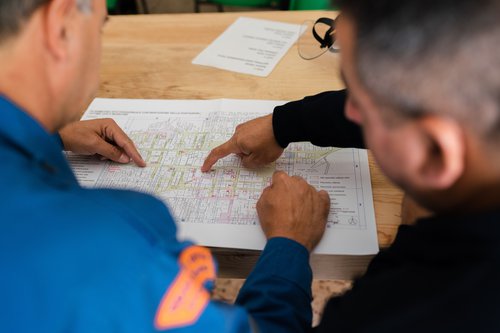
Data Availability - The Barrier to Net Zero Carbon That Nobody is Talking About
The Committee on Climate Change ( CCC) advised in 2019, that the UK should be aiming for net zero emissions by 2045-2050 in order to be compatible with the1.5ºC Paris Agreement goal.
Its recommendations were:
- For the UK, a new target: net-zero greenhouse gases by 2050 (up from the existing emissions reductions target of 80% from 1990 levels by 2050);
- For Scotland, a net-zero date of 2045, 'reflecting Scotland’s greater relative capacity to remove emissions than the UK as a whole';
- For Wales, a 95% reduction in greenhouse gases by 2050, reflecting it having 'less opportunity for CO2 storage and relatively high agricultural emissions that are hard to reduce'.
But how to get there and why is it proving not to be so easy?

When you think about ‘Net Zero’, you might be imagining beautiful, self-sustaining and isolated log cabins in the mountains of Canada, running off nothing but a small wind turbine and solar panels. Well…I am sorry for bringing some disappointing news- In reality, buildings like this will have very little to do, with some of the world's largest economies achieving Net Zero carbon emissions by the year 2050. Technological innovations that go into creating these ‘proof of concept’ buildings are vitally important but are simply not applicable to the developed world’s modern way of life.
There have been huge advancements in renewable energy and sustainable building design over the past few decades and this will undoubtedly play a crucial role in the journey to Net Zero, but there are equally important factors that nobody is talking about. The term ‘Net Zero’ refers to the trade-off between energy generated and energy consumed, constant measurement at building level must take place, and for that, you need reliable data and ongoing analytical reporting.
Concept vs Reality

A Net Zero building is not unattainable; it is very much a possibility, at least on paper anyway. Architects have proven the concept of sustainable building design by minimising glass facades, ground source heat pumps and free cooling strategies. They have created complex models that prove that it is very much a possibility to design and build a space that relies very little, if at all on power from the grid.
Once a building is completed, commissioned and handed over it is often a very different story. It is no longer a concept in an architects head but a living breathing thing that serves a purpose. Many of the calculations will have considered minimal heating and cooling requirements, and the assumption that building services will be configured and maintained for a specific number of people or particular working hours. What do you think happens when the facilities manager is getting 74 calls a day because it is either freezing on floor 3 or boiling on floor 8? Do you think they care about Net Zero then?
Why is data important?

A buildings energy usage data allows us to measure the actual energy performance of building vs the expectation of its conceptual design. Looking specifically at high resolution main fiscal meter data here is important as it will provide the most accurate depiction of what is being taken front the grid and when. When the baseline performance has been established, data points form sub meters, BMS (Building Management System) points and environmental sensors such as CO2 concentration and space temperature can be used to pinpoint exactly where there is an issue and take action.
The Challenges

Availability of main fiscal meter data - The monumental delay with the government's smart meter roll out is one thing, but even those divides that have been installed are very rarely utilised. A combination of there being no incentive for industry data collectors to provide data with many energy and sustainability experts not knowing where to look results in a lost opportunity to accurately measure building performance.
92% of building sensor data is never used - Similarly, many new developments these days are equipped with a BMS that has the potential to provide hundreds if not thousands of data points at high resolution in real-time. As the primary focus is getting a building up and running and functional, this performance data is often an afterthought and is long forgotten.
Behavioural Change and Engagement - The most significant challenge by far is helping people to understand the impact they have on the environment. By making building performance data available to the masses and contextualising, the message so it is more easily understood will go a long way to achieve this. Energy, the environment and climate change can often be an emotionally charged conversation, by making decisions with data you remove this risk and allow people to make better-informed decisions.
Let's grab coffee and begin the conversation, about how can we help you to better understand your building energy data

